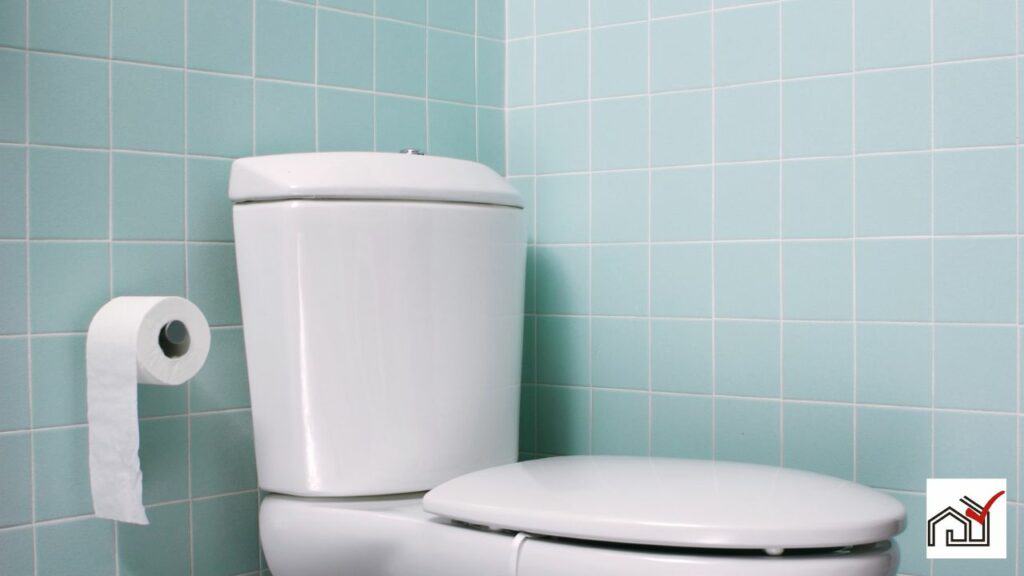Toilets do not need to be against a wall. The placement is determined by the bathroom layout, homeowner preference, and local building codes, which set clearances for comfort and accessibility.
Plumbing connections also affect toilet location. Traditional designs usually have toilets next to walls to hide plumbing, but modern designs can vary.
Understanding Toilet Placement
In bathroom design, the placement of the toilet is important for function and compliance with codes. The standard distance from the toilet to the back wall, known as the rough-in, is usually 12 inches. This allows proper alignment with plumbing and room for the tank and molding.
Toilet design can change the space behind the toilet. Low-flow toilets might have a larger gap due to smaller tanks, while older models with bigger tanks could have less space. Some people might prefer toilets that are closer to the wall for aesthetic reasons, or they may choose wall-mounted toilets.
Building codes require toilets to be placed at certain distances from other fixtures and walls for safety and accessibility. An offset flange can be used to shift the toilet's position if needed, but must follow local regulations.
Choosing a toilet and its location must consider plumbing, building codes, and the desired bathroom layout.
Plumbing and Spatial Considerations
When installing a toilet, it is important to account for plumbing requirements and space constraints. The standard distance from the wall to the center of the toilet flange is 12 inches, which suits most toilets. However, 10-inch or 14-inch rough-in sizes are available for non-standard bathroom layouts or personal preferences regarding space from the wall.
The toilet flange must be accurately installed on the floor to connect the toilet to the drainpipe, ensuring a stable and leak-free connection. If a standard toilet does not fit, an offset flange can be used to slightly alter the toilet's position without major plumbing changes.
Building codes require certain clearances around the toilet and between fixtures to allow safe and comfortable movement in the bathroom. The space between the toilet and the wall also impacts cleaning ease, aesthetic balance, and maintenance access.
The Role of Bathroom Design
Bathroom design plays a crucial role in choosing and positioning a toilet. The design affects both the appearance and function. The distance of the toilet from the wall can make the bathroom feel more spacious. Wall-hung toilets, which have concealed tanks and reduce the space between the toilet and wall, are popular for their modern look and space-saving appeal.
However, not all bathrooms can accommodate wall-hung toilets due to design constraints or budget. In these instances, a plumber can recommend the best toilet type, including traditional models with varying distances to the wall. For those wanting to reposition their toilet, solutions like offset toilet flanges can help without major plumbing work.
The goal of bathroom design is to balance aesthetics with functionality. The toilet should fit well with the room's design while being functional. Following building codes and seeking professional advice are important for proper toilet placement and selection.
Alternatives to Traditional Layouts
Homeowners can move beyond traditional bathroom layouts by choosing innovative toilet designs and placements that maximize space and contribute to a distinctive bathroom style. It is not mandatory to position toilets against a wall. Toilets installed away from the wall can offer design flexibility and may simplify cleaning and maintenance.
Wall-mounted toilets present a modern appearance and can make a bathroom look larger, which is particularly beneficial in limited spaces. For those who prefer floor-mounted toilets but wish to adjust the placement, an offset flange is a useful option that allows repositioning of the toilet for individual preference or to fit specific bathroom designs.
When selecting a new toilet, it is crucial to consider its location relative to other fixtures like sinks to maintain a functional and aesthetically pleasing bathroom. The arrangement should support easy movement and use.
Exploring non-traditional layouts enables homeowners to achieve a desirable mix of style, function, and comfort in their bathroom design.
Relocating Your Toilet Essentials
Bathroom remodeling may require moving toilet fixtures to improve space and functionality. This includes the toilet and its water supply line. It's important to consider the rough-in distance from the wall, and an offset flange can help position the toilet closer to the wall without major plumbing changes. The new location must meet building codes, ensuring adequate space for accessibility and maintenance.
Relocating the toilet also means rerouting the water supply line, potentially involving wall or floor alterations. It's advisable to hire a professional plumber to ensure safe installation and prevent leaks.
Additionally, when moving the toilet, remember to keep toilet paper holders within easy reach to maintain convenience and enhance the user experience in the new bathroom layout.





